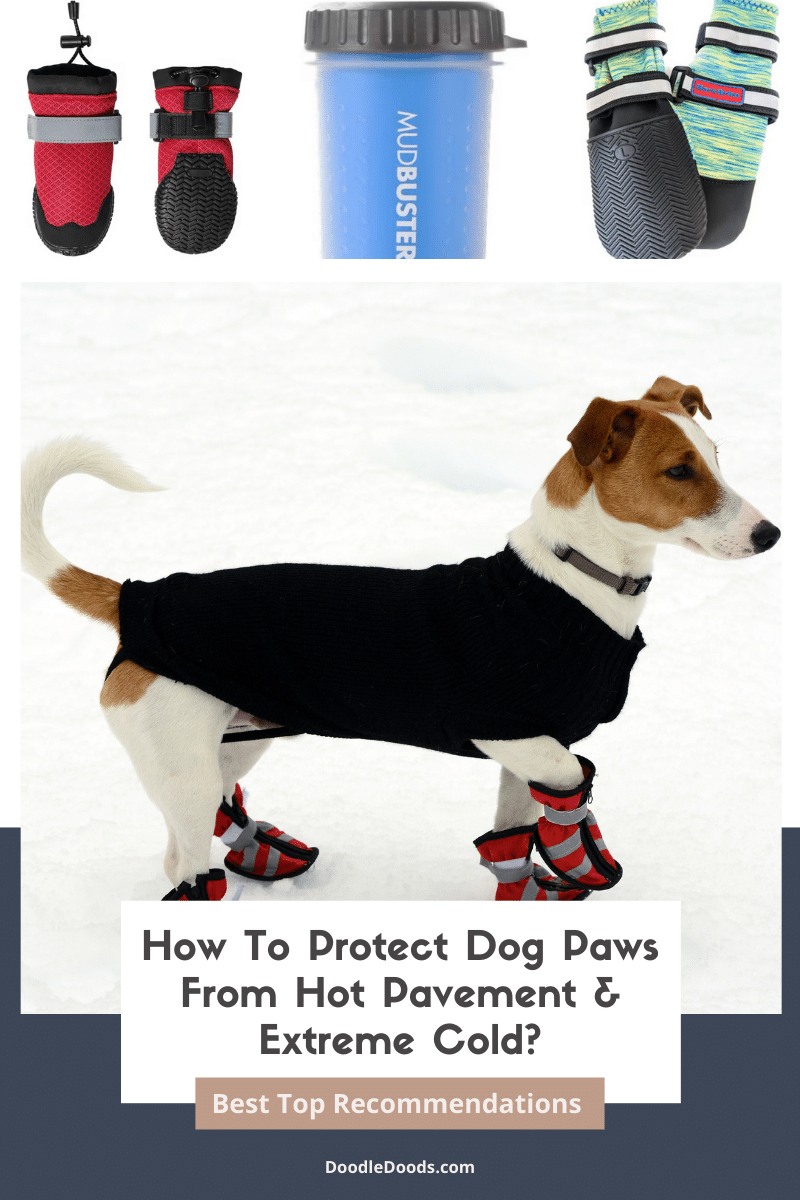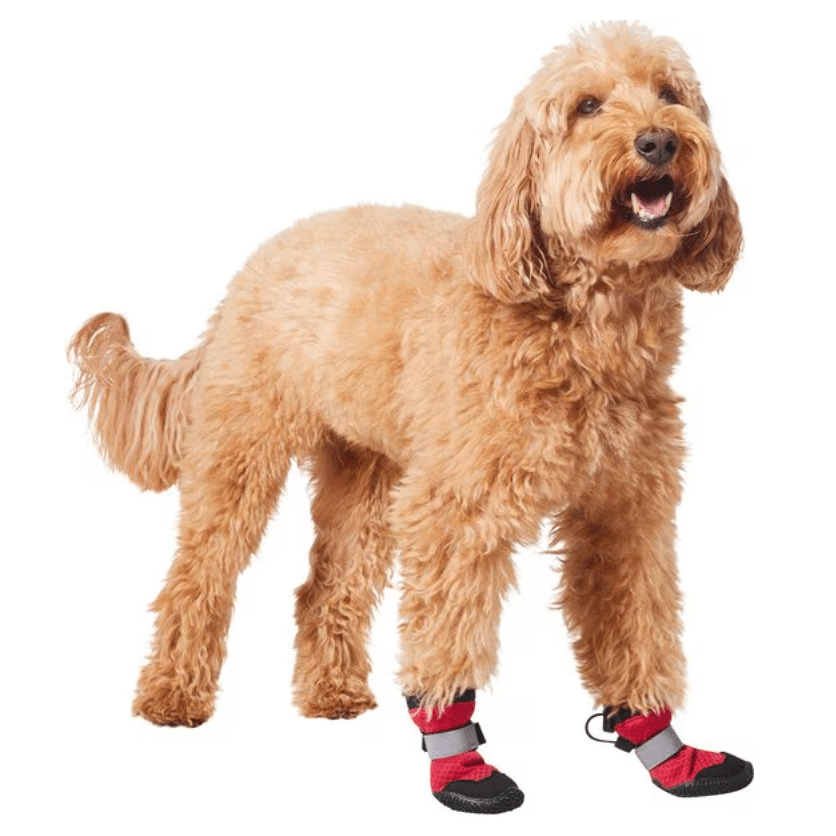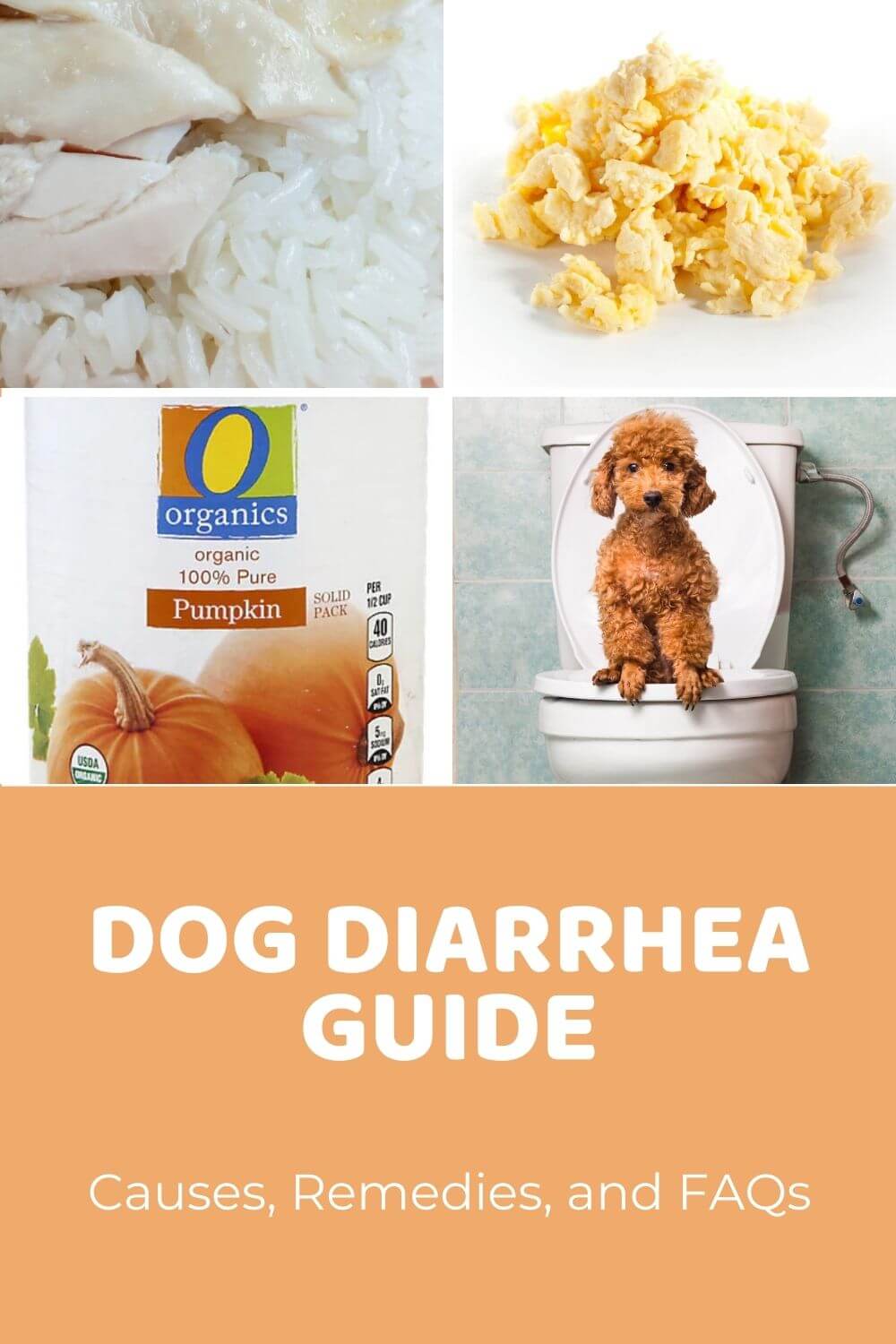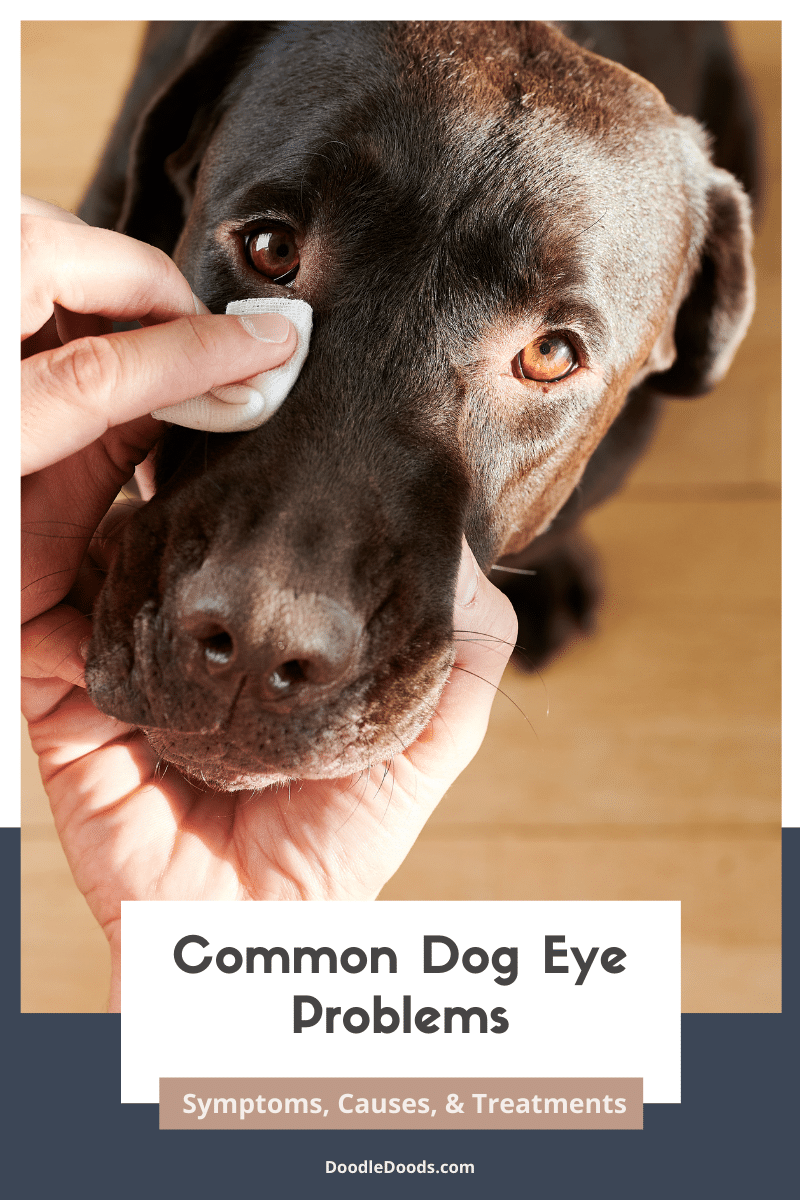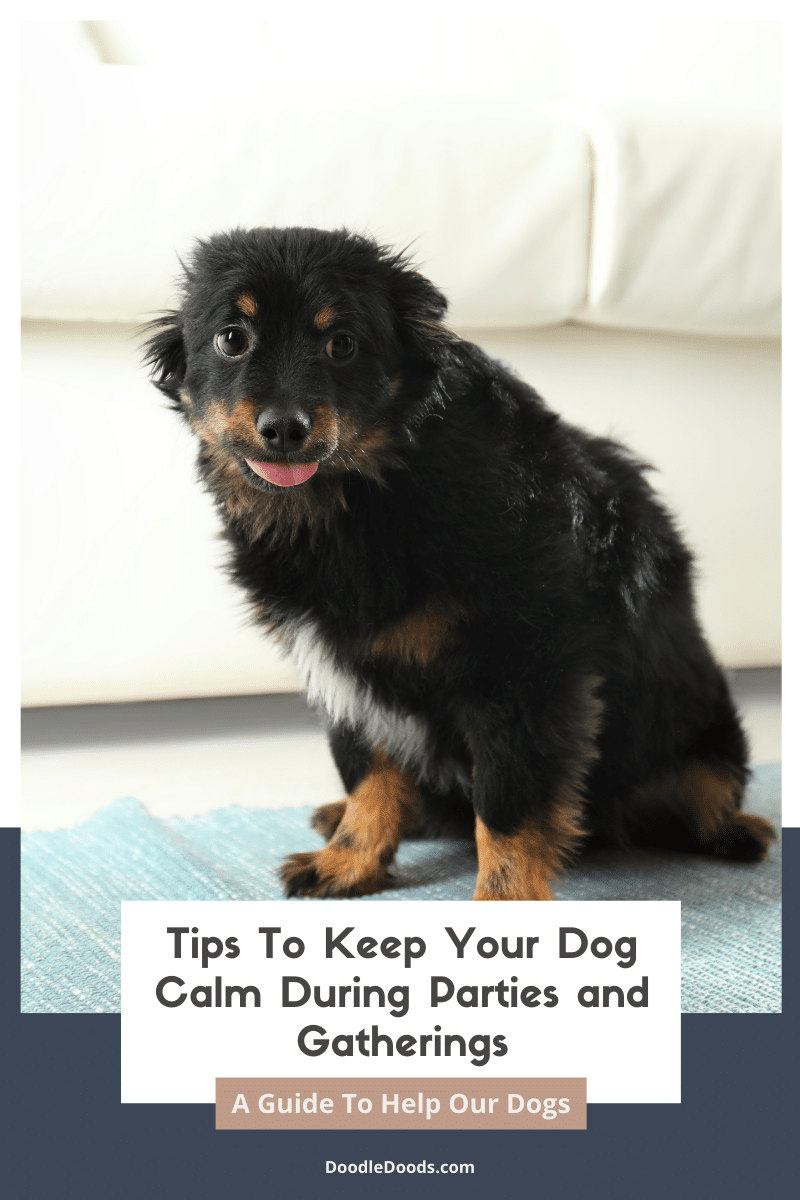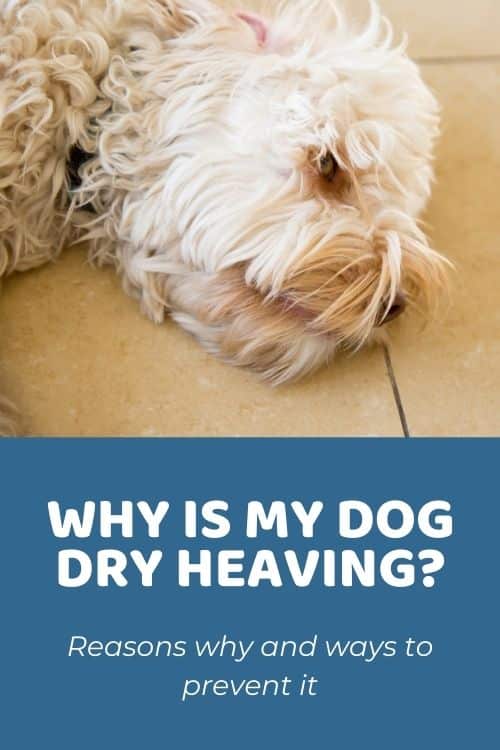Depending on the weather conditions, we obviously dress ourselves accordingly. When it’s hot outside, we’ll get our shorts, flip flops, and sunhats. In extreme cold, you’ll probably want to bundle up in layers and put on your most weather proof boots. And while dogs certainly have a full on attire all year round, their paws are the most exposed to all the elements outside. So how to protect dog paws from hot pavement? And what about snow, ice, and salt? In this guide, we’re going to cover everything from dog booties for hot pavement and snow as well as many other tips and tricks to keep your little furbaby’s paws all nice and protected in every season and climate.
Table of Contents
- How To Protect Dog Paws From Hot Pavement And Extreme Cold: Why Do You Need To Protect Your Dog’s Paws?
- How To Protect Dog Paws From Hot Pavement
- How To Protect Dog Paws In Winter
- How To Protect Dog Paws From Hot Pavement And Extreme Cold: FAQ
How To Protect Dog Paws From Hot Pavement And Extreme Cold: Why Do You Need To Protect Your Dog’s Paws?
Even people who’ve never owned a dog know all too well how those daily walkies are essential for our canine pals. Whether it’s scorching hot or blizzard outside, they need to get their steps in, have a little sniff around (enrichment is vital for our pooches!), and, of course, relieve themselves.
Indeed, dogs’ paws are thought to be quite durable and built for hitting the pavement. But, this doesn’t necessarily mean that they can’t get damaged or injured in extreme weather conditions. Heck, even on a regular breezy, comfortable day your pup’s paws could potentially get injured due to sharp objects or insects on the ground. And as we know, dogs’ paws aren’t covered in a thick layer of fur that could protect those toesies from harm.
Obviously, there are slightly different concerns to keep in mind both in winter and summertime. So before we answer your question “how to protect dog paws from hot pavement and extreme cold?” we’ll explore the main risks to your dog’s paw health in different seasons.
Concerns In Summer
Burns From Hot Pavement And Sand
In very hot weather, it’s not all that uncommon for dog paws to burn from pavement. Their exposed paw pads can get burns, blisters, and injuries from hot pavement and sand. As a general rule of thumb, if it’s too hot for you to walk barefoot on the pavement, it’s also too hot for your dog. Not to say that you should walk barefoot in solidarity with your dog… Unless that’s what you’re into. But rather, test the pavement and sand for about 5 to 10 seconds with your palm or sole before letting your dog walk on it.
By the way, if the air temperature is above 86 degrees Fahrenheit, the asphalt temperature is over 50% higher at about 135 degrees Fahrenheit (Journal of the American Medical Association). Since you’re wearing shoes, you probably won’t even notice it. But your dog definitely will! Keep in mind that sand, concrete, and even artificial grass are also all known to get extremely hot in warmer weather.
Seasonal Allergies
Did you know that it’s not just us humans who have to deal with those nasty seasonal allergies? For some dogs, it’s just as much of an issue, especially for Poodle mixes that are prone to allergies. Again, as your dog’s paws come in contact with the ground where many of those allergens are, especially in the grass, you can imagine how those allergies will get triggered.
If your pup comes in contact with certain allergens, their paws will likely get itchy. Again, as it’s often the case for us humans. You may notice your dog excessively licking its paws to soothe the discomfort and itchiness, and the paws may start turning brown or pink. By the way, getting burned from walking on hot surfaces like pavement or sand can also make the paws itchy and turn them brown or pink. These are just some symptoms to watch out for!
Parasites And Grass Awns
Your dog’s bare paws are also more exposed to parasites like ticks, worms, mites, but also grass awns. Not only can all of them cause allergies and itchiness, excessive licking and in turn even more inflamed paws, some of them may also cause very painful injuries. For instance, grass awns can be super sharp and penetrate deep into the paw pads. Once that happens, it can cause allergic reactions, discomfort, itchiness, and pain.
Concerns In Winter And Extreme Cold
Burns From Asphalt Salt And Chemicals
Just as hot pavement and concrete can burn and blister your dog’s paws, so can all the chemicals and sidewalk salt that are often used to melt the snow and ice. But in addition to the salt burning the paws with chemicals, there’s also the added risk of your dog ingesting those said chemicals when licking their paws after a walk. While technically designed to walk on all sorts of terrains, dogs’ paws are still delicate and they may suffer from various reactions like discomfort and itchiness due to those pavement salts and chemicals. Like with allergic reactions and burns in the summer, dogs often resort to licking and chewing their paws to soothe the reactions from those chemicals. Needless to say, this can cause milder symptoms like an upset tummy, or more severe reactions that require urgent veterinary care.
Frostbite And Injuries From Snow And Ice
Exposed dog paws in snow are also at risk of frostbite. Anything below 20 degrees Fahrenheit is potentially going to be dangerous for your pup’s paws. The skin will get very tender and could blister, you may notice some discoloration, swelling, and the obvious difficulty when walking. But even in slightly warmer degrees, snow and ice can dry out your dog’s paws, which can lead to irritations and inflammation.
But not only does below freezing point snow and ice cause frostbite, the icy snow and plain ice can also be very sharp and injure your dog’s delicate paws. That’s especially true when the weather has been changing, constantly getting warmer and then colder again. By the way, if it’s very damp outside (or for some reason your dog’s paws are damp before heading outside), even milder cold temperatures could easily lead to frostbite.
Snowballs Forming On Your Dog’s Paws And Feet
If you have a fluffy, hairy pup, you’ve probably noticed snowballs forming between their paw pads and on their feet. While yes, those snowballs are funny to witness, they can actually cause quite a bit of discomfort for your dog and also increase the risk of frostbite. Essentially, those snowballs are cold, hard balls of ice. You can see how it can cause issues for your pet! What’s more, those constant snowballs could lead to splayed paws – a condition that can cause inflammation, issues with your dog’s balance, pain, and poor circulation.
Slipping And Falling
One of the many reasons why we’re not exactly the biggest fan of icy winters is how slippery it can get outside! It’s difficult to stay on our own two feet even with the best winter boots, imagine how uncomfortable and slippery it’s going to be for your dog. Especially considering how smooth dog paws are.
While a few minor slips here and there are likely not a huge reason for concern, one wrong turn, and your dog could easily fall and injure themselves. Joint sprains and muscle strains are all common when dogs slip and fall, and they could cause severe pain for your pooch for an extended period of time.
How To Protect Dog Paws From Hot Pavement
Now onto the big question “how to protect dog paws from hot pavement?”. During those warm summer months we urge you to be cautious and mindful of your best pal’s paws. Fortunately, there are many different tactics you can employ – paw protection for hot pavement could include various different methods, depending on what suits your pup best.
Schedule Your Dog’s Walks To Early Mornings And Late Evenings
One of the easiest ways to protect your dog’s paws from hot pavement is to limit the time they spend on it. In the early mornings and later evenings the pavement has usually cooled off enough for your pup to walk on it with no trouble. As an added bonus, you and your pup won’t have to struggle underneath the scorching sun and the walks will be more bearable for the both of you.
If you can’t go out for walkies earlier in the morning and later in the evening, then you can also ensure that your dog doesn’t walk on hot surfaces like pavement, gravel, concrete, sand, or artificial grass during the hottest times of the day. Natural grass, on the other hand, might not cause as many issues. Just make sure to bring along plenty of fresh drinking water and a portable water bowl for your pooch to cool off during breaks.
Dog Shoes For Hot Pavement
A failsafe method for protecting your dog’s paws from hot pavement is by not letting them step on it with bare feet. Adding a layer of protection between the ground and your pup’s paw pads is obviously going to do the trick. Just keep in mind that it will probably take a little bit of time for your dog to get used to walking in them. We recommend you let your pup practice at home with the booties on first.
If you’re looking for some practical dog shoes for hot pavement, then these Frisco Hot Pavement Dog Boots are worth checking out. These are perfect for those hot summer days, as they feature a non-slip rubber sole and a breathable mesh upper, which means that your dog won’t get too hot with the booties on. Plus, they also have reflective straps for some extra safety later at night. You can adjust the fit with the hook-and-loop closure and bungee cord so that your pup won’t wiggle its way out of the booties.
These pavement booties come in sizes ranging from small and way up to XXL, and you can choose between either a red or green pair. Poodles and Poodle-y Doodles have tinier feet so be sure to carefully measure your dog’s paws before buying a pair. Also, oftentimes front paws are bigger than back paws, so we’d recommend getting a larger pair for your dog’s front feet and a smaller pair for their back feet.
Use Paw Pad Balm
If your dog just hates wearing boots, can’t even seem to take two steps with them on, you’re probably wondering – how to protect dog paws without boots then? Well, that’s where paw waxes and balms come in handy.
One of the most well-known and popular products is the Musher’s Secret Paw Balm that’s made with 100% natural waxes like beeswax and vitamin E. It forms a breathable, yet dense barrier onto your dog’s paws to protect them from the elements all year round. It comes in a 60 g jar, 200 g jar, as well as a huge 1 pound jar. Simply apply a thin layer of the balm onto your dog’s paws, including the toe pads and between the toes, to protect them from hot pavement and other terrains.
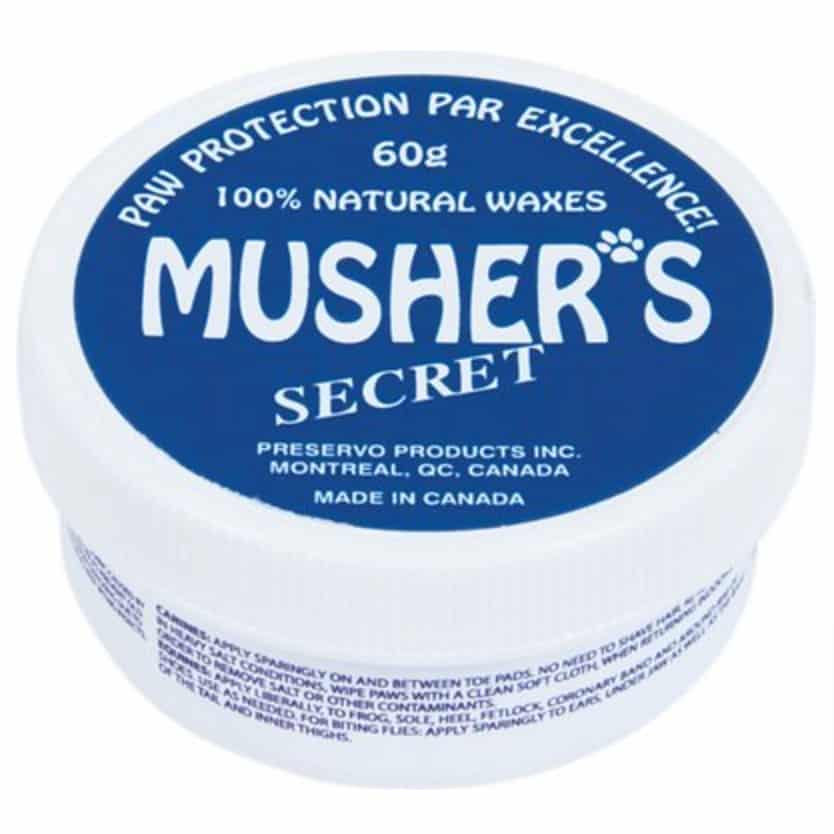
Rinse Your Dog’s Paws After Spending Time Outdoors
If your pup is allergic to pollen and grass, we also recommend quickly giving them a rinse or a more thorough wash to get all of those allergens off. This way, your dog won’t rub those allergens onto their face and they won’t start to excessively lick the paws to relieve the itchiness, either. As we mentioned, once your dog starts to excessively lick and chew its paws, it could lead to even more serious irritation and inflammation. And so the circle begins.
When washing your dog’s paws, using just water might be enough. However, if you do decide to use a shampoo, make sure to use one that’s specially made for dogs. For sensitive pups, hypoallergenic and soothing shampoos are the best choices.
Examine Your Dog’s Paws After Walks
As you’re already rinsing or washing your dog’s paws after a walk outside, you should also carefully examine them. Signs to watch out for include discoloration, pink or red spots between the toes, blisters, inflamed spots, injuries and scrapes, or just painful spots. Also, pay attention to your dog’s overall behavior. If they seem to be walking funny or limping, trying to avoid stepping on their paw pads, then it’s time to consult with your vet about the appropriate treatment.
How To Protect Dog Paws In Winter
But what about wintertime? How to protect dog paws from extreme cold? And all the snow and ice that’s on the ground? Well, the tactics here aren’t that different, so here they are:
Get Your Pup A Pair Of Winter Dog Booties
Just as in summer you’d want to protect your dog’s paws from the hot pavement, so should you also protect your dog’s paw pads from snow and ice in the winter. Adding that extra layer of waterproof cushioning is one of the simplest things you can do to protect your dog’s paws from the elements.
One of our top picks for the colder months are Bark Brite All Weather Dog Boots. These neoprene dog booties for winter have a durable, non-slip rubber sole that’ll keep your pup safely steady on even the iciest, snowiest ground. They’re suitable for all weather conditions, including snow and rain. What we love about these dog booties is that they conform to the dog’s natural paw shape so that they fit comfortably.
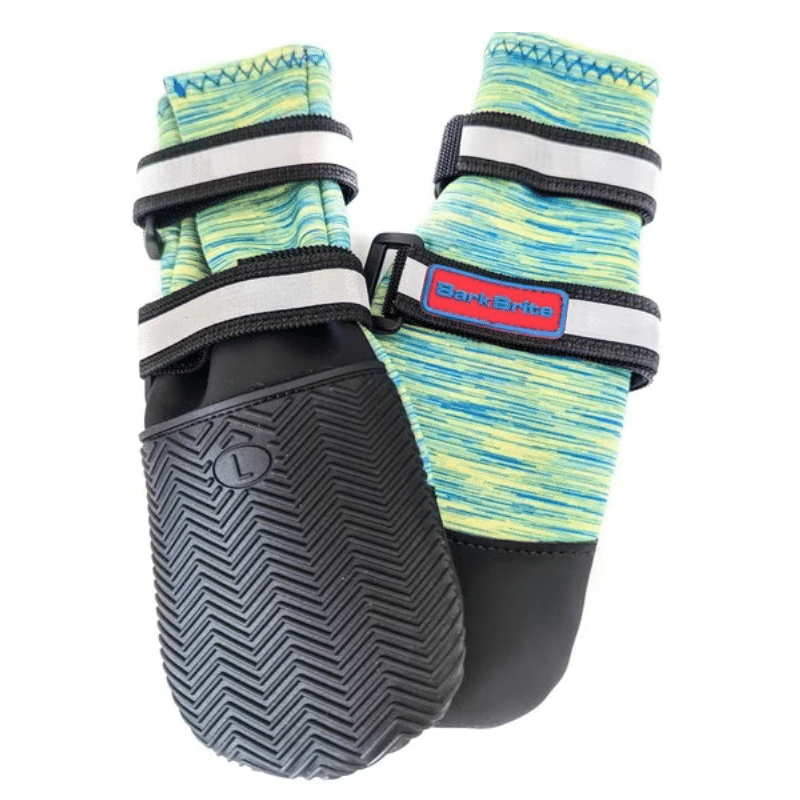
The booties come in cute colors like black, turquoise, and pink, and the sizes range from small to XXL. They may slip slightly lower during walks and runs, but as other buyers have noted, they definitely stay on and will keep the paws dry and protected.
Another option is to try dog leggings. It’s likely going to take a bit of trial and error to get them to fit right, but to be fair, dog booties may just as likely cause you some headache if they’re tricky to get on and keep slipping off the paws. The great thing about dog leggings is that they go up much higher and will therefore also prevent those snowballs forming on the higher portions of your dog’s feet and legs.
Use Paw Balm In Winter, Too
If you live in a place where the winters get real wintery, but your dog just refuses to walk with booties, then the next best thing you can do is to moisturize their paws with a balm before heading outside.
In addition to the Musher’s Paw Balm we recommended above, you can also try the Pet MD 3-in-1 Pet Balm. Similarly, a thin layer will keep those paw pads moisturized and protect them from asphalt salt and chemicals, as well as prevent them from drying out because of all the snow and ice.
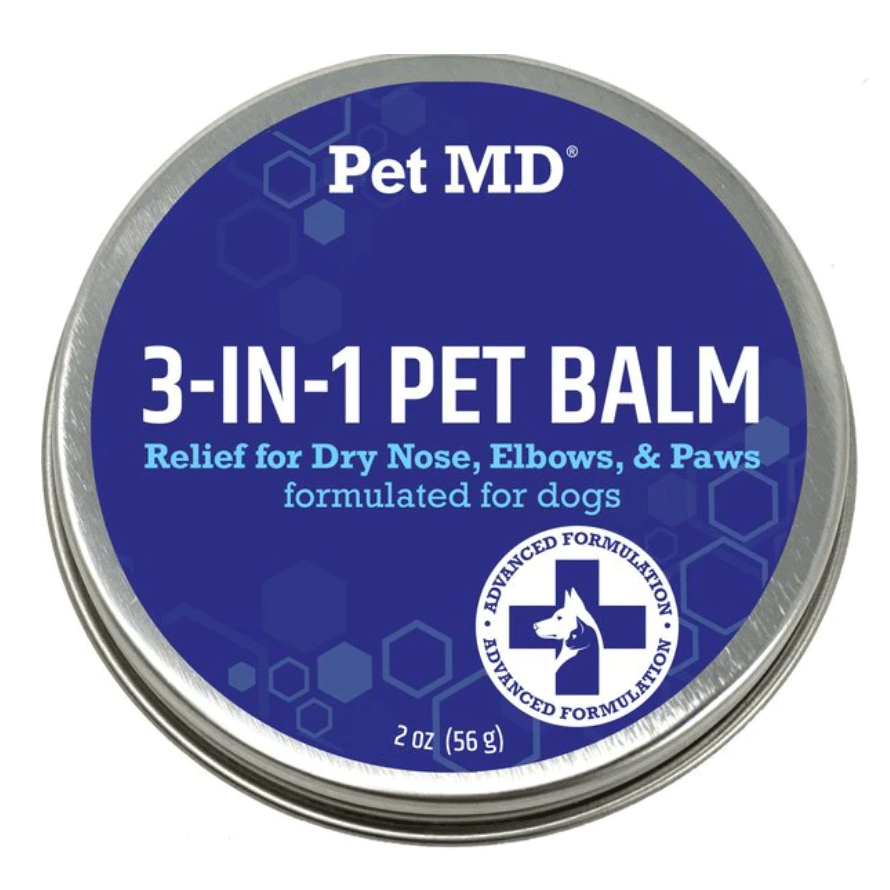
The Pet MD Paw Balm is a natural and non-toxic formula that’s made with 12 natural oils, butters, and dog-safe essential oils, such as shea butter, coconut oil, and beeswax. PS! If your pup tries to lick it off as soon as you rub it in, give them a toy or treat to distract them before heading outside. By the way, you can also use this balm on your pup’s nose and elbows to prevent drying and chapping in extreme weather conditions.
Don’t Forget To Groom Your Dog’s Paws!
If you’ve got a Doodle or any other breed that needs regular haircuts, make sure that you don’t neglect their paws. As we mentioned earlier, snowballs tend to form on longer hair, and they can get very painful for your dog.
An easy way to prevent this is by trimming the hair on your dog’s feet and between the paw pads. The less hair there is, the less snow and ice can start to accumulate on the paws and feet. As a result, your pooch will enjoy its time outdoors so much more than they would with those painful ice formations.
If you usually have your pup groomed by a professional groomer, you can let them know exactly what you need. Or, if you’re like us and prefer to take matters into your own hands (while also saving a fair amount of money), we recommend you check out our online course How To Groom A Doodle At Home and learn how to do it yourself.
Limit The Time Your Dog Spends On Snow, Ice, And Salt
Whether it’s super hot outside or extremely cold, limiting the time your dog spends on those extreme terrains is obviously going to protect their paws. For dogs that hate booties, this is a crucial step.
Obviously, if it’s snowy and icy outside, you can’t really prevent your pup from stepping on them. But, you might want to consider cutting outdoor time shorter than usual just to keep those paws from getting a frostbite. We also recommend you let your dog walk on surfaces that have been properly shoveled. And if possible, avoid paths that are covered in salts and chemicals.
Wash Your Dog’s Paws When You Get Home
Once you and your pup get home after all the funsies out in the snow, you should properly wash your dog’s paws. The goal is to wash off any and all chemicals they might’ve stepped on, especially asphalt salts. This is also a good time to examine your dog’s paws for any signs of dryness, irritation, inflammation, or injury.
A simple trick is to soak your dog’s paws in some warm water to quickly soak off the painful snowballs and harmful salts. However, you can also get yourself a dog paw washer that should make the process faster and less messy.
How To Protect Dog Paws From Hot Pavement And Extreme Cold: FAQ
Yes, you should absolutely protect your dog’s paws, regardless of the climate you live in. Extreme weather conditions can obviously cause a wide range of issues for your pet’s delicate paws. But even in mild weather conditions, pesticides, allergy triggers, and sharp objects can injure your dog’s paw pads. If you’re not quite sure where to start, first examine your pup’s paws and see if they feel dry, cracked, or blistered. Even rougher terrains and asphalt can make the paws raw and more sensitive, and paws need just as much care as any other part of your dog’s body.
A hack we always recommend in summertime and warm climates is to walk your dog earlier in the morning and later in the evening. When the sun isn’t as high, the pavement is usually cooler and won’t cause as many issues for your pup’s paws, either. Using a paw wax or balm (see recommendations above) is also an easy method to protect the paws from the hot pavement and potential allergy triggers outside. And if it’s really hot outside, we strongly recommend some breathable dog booties that will keep your dog’s paws cool and comfy.
If your dog isn’t a fan of booties, make sure to use a paw balm on its paws pads before going out for a walk. Dog-safe paw balms and waxes are relatively affordable and provide protection from excess heat as well as snow, ice, and salt. Just make sure to properly coat the whole paw pad and between the toes, and rub it in so that it also moisturizes the paws.
Vaseline is a common alternative to paw balms and waxes that people use on their dogs’ paws to moisturize and protect them from extreme weather conditions. However, we do advise using more pet-specific products like paw waxes and balms that are guaranteed to contain dog-safe ingredients. Some dogs can react to vaseline, as it can trigger allergies or cause stomach issues when ingested. But as a short-term substitute, vaseline is generally a safe option until you can get your hands on a jar of paw balm.
How To Protect Dog Paws From Hot Pavement And Extreme Cold: Final Thoughts
If your dog is anything like the ones we’ve been blessed with, you probably know how excited they get the moment they hear the word ‘walk’ or see that you’re holding their leash. And even though they seem to love nothing more than spending time exploring the world outside their home, it can also come with some risks to their delicate paws.
The great news is that you don’t have to keep your pup indoors for an extended period of time during extreme weather conditions. So, the short answer to your question “how to protect dog paws from hot pavement and extreme cold?” is this – get your dog some comfy, high-quality booties or use a dog-safe paw balm, limit the time they spend on very icy or extremely hot surfaces, and always wash their paws after you get back home.
Also, make sure that you keep an eye on your dog’s paw health and overall behavior. If you notice any sudden changes to their paw color or texture, or see that they’re trying to avoid stepping on a paw, we recommend you book a consultation with your vet to get to the bottom of it.
Want to Learn
DIY Doodle Grooming?
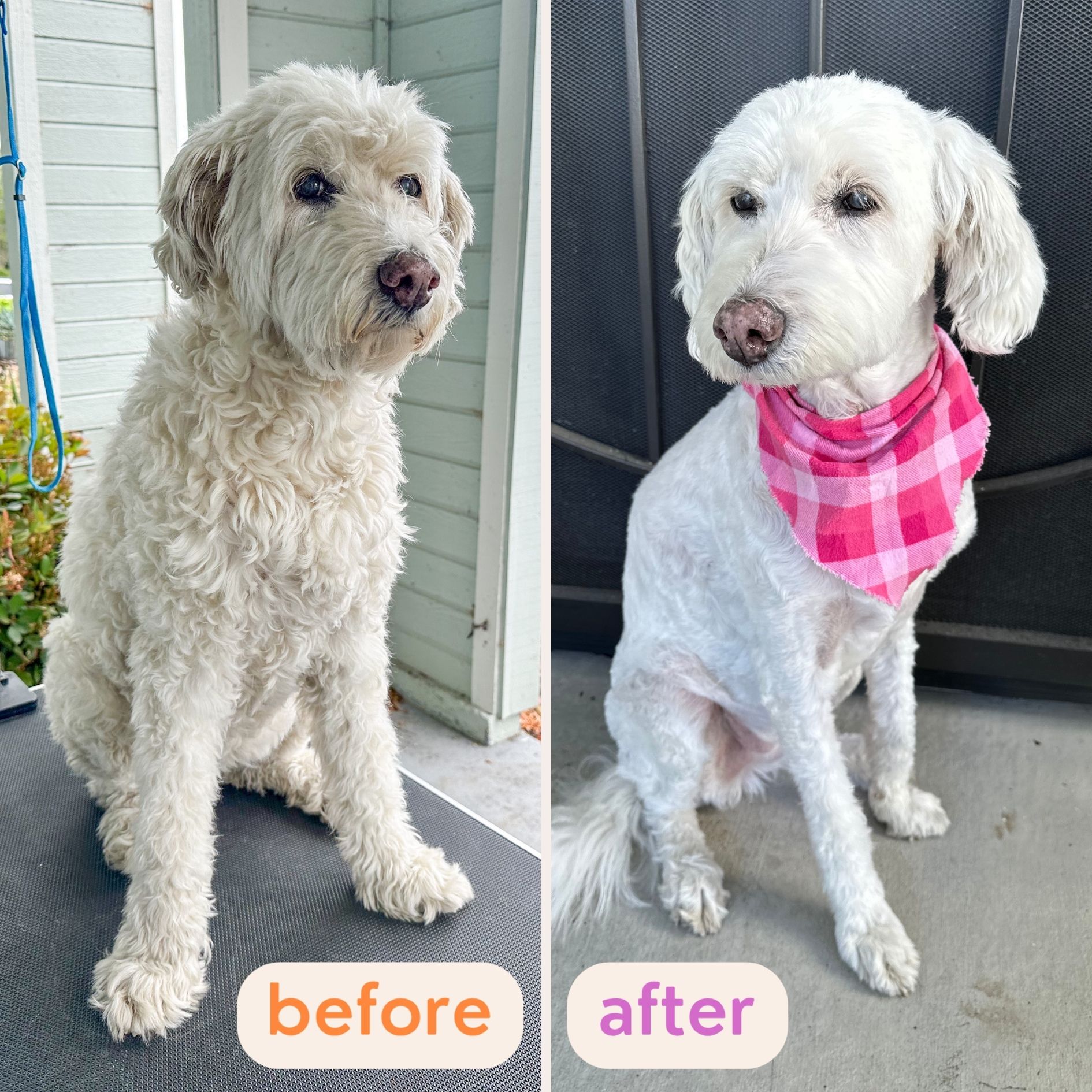
 “Every concern and question I had now has clear, practical solutions.” – Paula D.
“Every concern and question I had now has clear, practical solutions.” – Paula D.
 “These lessons have provided tremendous amounts of information.” – Steve B.
“These lessons have provided tremendous amounts of information.” – Steve B.
 “Buy the course and complain about how easy it is!” – Chris S.
“Buy the course and complain about how easy it is!” – Chris S.
Learn How To Groom Your Doodle At Home…
Safely…And Without Confusion:

